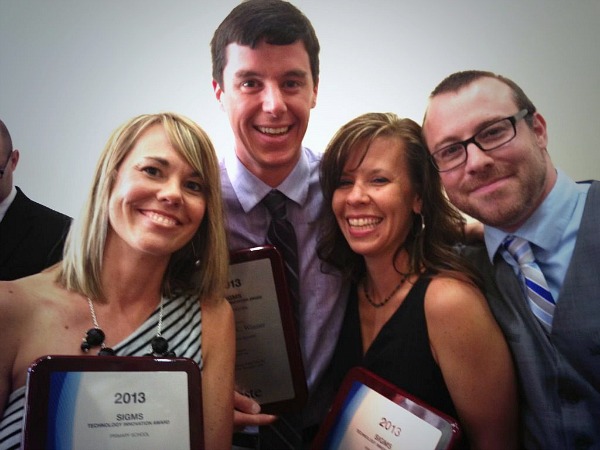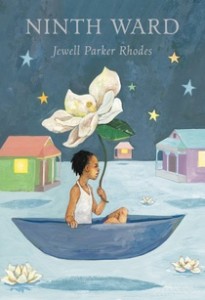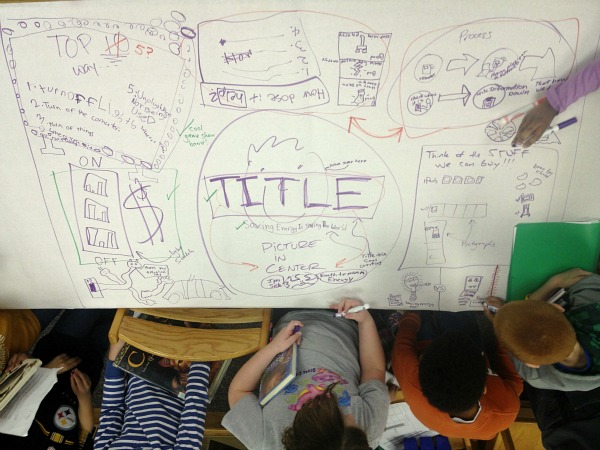
Left to right: Earth Pals collaborators Gretchen Welk, Matthew Winner, and Sherry Gick, and friend Nick Provenzano (aka The Nerdy Teacher).
An exploration of New Orleans’s hurricane-ravaged Ninth Ward and a student-driven study on how to conserve energy in a school are the winners of this year’s SIGMS (media specialists special interest group) Technology Innovation Awards bestowed at ISTE, the annual ed-tech conference held in San Antonio, TX, June 23–26.
The prizes are granted annually to school media specialists and teachers who collaboratively plan a project involving technology, receive administrative support, execute the project successfully, and produce data and tools so that others can replicate it.
In both winning projects, students undertook tech-supported explorations of an aspect of their community and then used social media to share their findings with a school in another region of the country.
Library media specialist Elizabeth Kahn, along with English teacher Lisa Valence, both of the Patrick F. Taylor Science and Technology Academy in Jefferson, LA, won in the secondary school category for their project, Traveling to the Ninth Ward.
In the primary school category, library media specialist Matthew Winner and teacher Albert Yoo, both of Longfellow Elementary School in Columbia, MD, along with school librarian Sherry Gick and teacher Gretchen Welk of the Rossville (IN) Elementary school, won for their project, Earth Pals.
 Kahn and Valence launched their study by having seventh graders read Jewell Parker Rhodes’s novel The Ninth Ward (Little, Brown, 2010), about a 12-year-old girl’s experience of Hurricane Katrina. “Our intent was to take this piece of literature and make it more global, make them understand it, connect with the author, connect with another class, it made the book come to life,” says Kahn. The kids corresponded about the project via Edmodo with students at the Van Meter Community School District in Iowa.
Kahn and Valence launched their study by having seventh graders read Jewell Parker Rhodes’s novel The Ninth Ward (Little, Brown, 2010), about a 12-year-old girl’s experience of Hurricane Katrina. “Our intent was to take this piece of literature and make it more global, make them understand it, connect with the author, connect with another class, it made the book come to life,” says Kahn. The kids corresponded about the project via Edmodo with students at the Van Meter Community School District in Iowa.
In the project’s first year, Kahn discovered that her students, kindergartners when the hurricane struck, had little perspective on it. “They had one story stuck in their mind relating to the event: ‘I ate a whole bag of cookies on the way to Houston’ or ‘My brother broke his arm and we spent the day in the hospital,’” she says.
Kahn and Valence led a field trip to the Ninth Ward, a 30-minute drive from their school. While the students were “walking in the footsteps of the character in the book,” they used Kahn’s iPhone to Skype with their Iowa peers about the key points of interest that some students had been charged to learn about. Those included empty lots and damaged homes, along with the Martin Luther King Jr. branch of the New Orleans Public Library, situated near the school that the book’s character would likely have attended, says Kahn, and new houses built by Brad Pitt’s Make it Right Foundation.
Kahn mapped a Tripline guided tour (below, courtesy of Elizabeth Kahn) of their journey and uploaded student pictures. The kids crafted narrated videos, accessible on the school library site, about the trip. When Rhodes did a reading at the school, the Iowa kids attended via Skype.
Using the same general model, Kahn might like to attempt a similar student-driven study sparked by Rhode’s historical novel Sugar (Little, Brown, 2013), set on a plantation.
While envisioning his award-winning project, Winner, an LJ Mover and Shaker, was drawn to the idea of creating a TEDx event at his school—driven by third graders. Winner, his colleague Yoo, and their partners in Indiana took on the environment as their theme. Winner’s students researched how their school could conserve energy and how much money could be saved as a result, detailed on his blog: Earth Pals: a TEDxElementary project (Part 1) and Part 2. The Indiana kids explored the savings that proper recycling would yield at their school facility. “The big picture all this stuff is draining energy and we can have an impact on it,” says Winner.
Using Edmodo, the students compared notes on data collection methods. “They were mirroring out the same process,” says Winner. Over 16 to 18 weeks, Winner’s kids used volt meters to measure energy use and scheme energy-saving measures. They counted light bulbs, calculated the energy used by each one, and used their math skills to determine how turning them off when a room was not in use would save money. Other suggestions included using surge protectors and turning off projectors when they weren’t active. “We did a Google Doc where the kids learned how to put formulas into a database” to determine overall savings, Winner says.
Winner’s students held brainstorming sessions during which they sketched ideas on giant-sized rough draft (pictured below) while conceiving an infographic. Then, they planned to use Prezi to make the final image for their presentation.

In future collaborations with other schools, Winner might like to see a student-driven exploration of bullying and how to address it. He envisions a virtual conference among several schools. “Get a conference on a topic see what all these kids can create, and share, and connect with,” he says.
Recognized at the ISTE conference, the winners received a $1,000 award for their school media center, up to $1,000 in travel money to ISTE conferences, and an engraved plaque, among other items.


